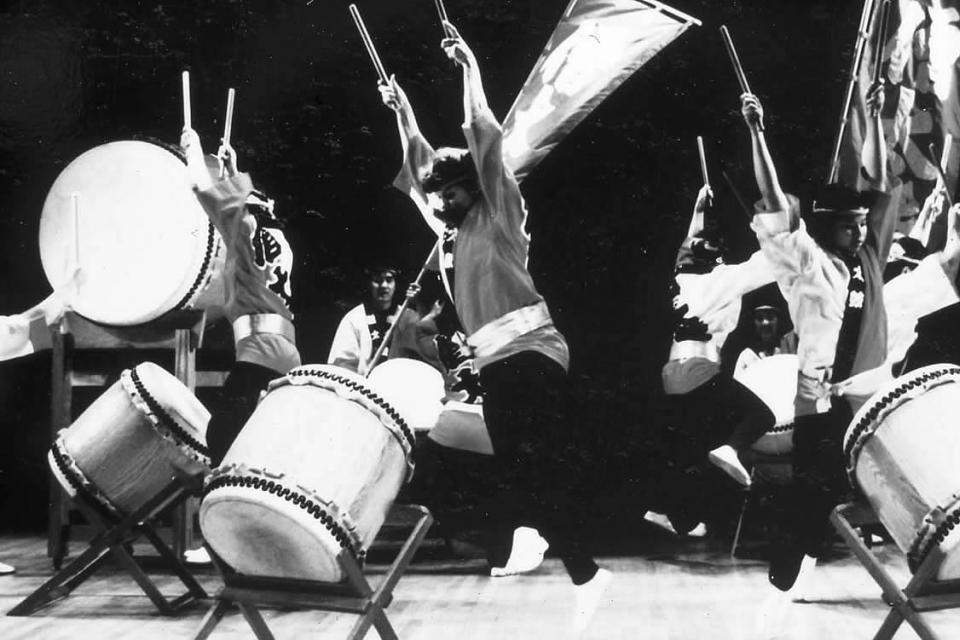FOR IMMEDIATE RELEASE - July 1, 2005
PRESS CONTACTS:
Chris Komai - - (213) 830-5648

BIG DRUM EXHIBITION REVEALS GROWING POPULARITY OF ENSEMBLE TAIKO GROUPS THROUGHOUT NORTH AMERICA PERFORMING ON JAPANESE DRUMS IN U.S. BEGAN WITH ONLY 3 JAPANESE AMERICAN GROUPS, NOW NUMBERS OVER 200
JAPANESE AMERICAN NATIONAL MUSEUM TO OPEN EXHIBITION JULY 14
Los Angeles, CA — The Japanese American National Museum will premiere Big Drum: Taiko in the United States on Thursday, July 14, the first major museum exhibition about the phenomenal growth of taiko (Japanese drum) performance in the United States and North America, beginning with three grassroots groups in California and ballooning to an estimated 200 performing ensembles in 24 states and throughout Canada.
Through the use of media arts pieces, artifacts, photographs and artwork, this new exhibition explores the unique history of a transplanted Japanese cultural art that took root in America, thanks to Japanese Americans, and after a methodical incubation period, grew in popularity to the point that taiko groups have been formed from Hawai`i to New Jersey, from Texas to Alaska, throughout New England, the West Coast, and all over Canada. Moreover, unlike Japan, the majority of individuals performing on these Japanese drums in North America today are women.
“After their unlawful and traumatic mass incarceration during World War II, Japanese Americans had to rebuild their lives and communities,” observed Sojin Kim, National Museum curator. “As a consequence of their experiences with racism and discrimination, many disassociated themselves from aspects of their ethnic culture that might distinguish them as ‘foreign’ or ‘Japanese’—and so in essence, Japanese Americans also had to rebuild their sense of identity in the post-World War II era. It’s not surprising, then, that for a younger generation of Japanese Americans, taiko provided a powerful and satisfying way to express cultural and community pride. What is remarkable is that so many other Americans are participating in taiko now. In this way, taiko also provides a meaningful way in which Japanese Americans can share their cultural heritage and history with everyone.”
Big Drum examines the broader issues behind taiko’s growing popularity. Besides explaining taiko’s post-war history, the exhibition describes how the American groups, through ingenuity and hard work, overcame their biggest obstacle: the high costs of drums. Lacking the means to buy drums from Japan, the American groups decided to build their own taiko, a challenging task requiring a trial-and-error process and persistence. The exhibition also focuses on how early American taiko performers incorporated diverse musical styles into their performances and why the first taiko groups provided a sense of identity to many Japanese Americans. Finally, the exhibition discusses why so many women have become taiko performers and how this new tradition is already being passed to a new generation of performers in America.

